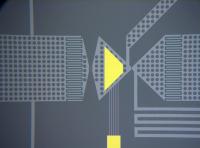A team of researchers at UC Santa Barbara has invented an instrument that will accurately measure single nanoparticles. The nanoparticles have diameters that measure some tens of nanometers.
The research report will be published in the online journal, Nature Nanotechnology. The journal will also be released in the print format in April.
According to Jean-Luc Fraikin who led the research team, this development will allow scientists to explore potentially multiple applications in research and investigation of nanoparticles. Some hitherto unexplored areas of applications will include pharmaceuticals, water analysis and biomedical sectors.
 UCSB's Instrument to measure nanoparticles
UCSB's Instrument to measure nanoparticles
The device was designed and built at the laboratory of UCSB professor of physics Andrew Cleland. Also collaborating in this research and development project was a team led by professor Erkki Ruoslahti at the Sanford-Burnham Medical Research Institute of UCSB. Fraikin is currently a postdoctoral associate working at the Marth laboratory at the Sanford-Burnham Medical Research Institute's Center for Nanomedicine, and in the Soh Laboratory in the Department of Mechanical Engineering at UC Santa Barbara.
The device will sense the minute particles present in fluid as it flows through the instrument, while the particles pass one by one at rates that could be as high as half a million particles each second. Fraikin comments that the device is comparable to a nanoscale turnstile, which can not only count but also measure the particles as they pass along with the fluid one by one through the electronic eye.
The instrument will determine the volume of each nanoparticle, leading to a rapid and accurate size measurement of all, including complicated mixtures. The research further revealed that the device will be able to track bacterial virus particles, not only in saline solutions, but also in the mouse blood plasma
Source: http://www.ucsb.edu/